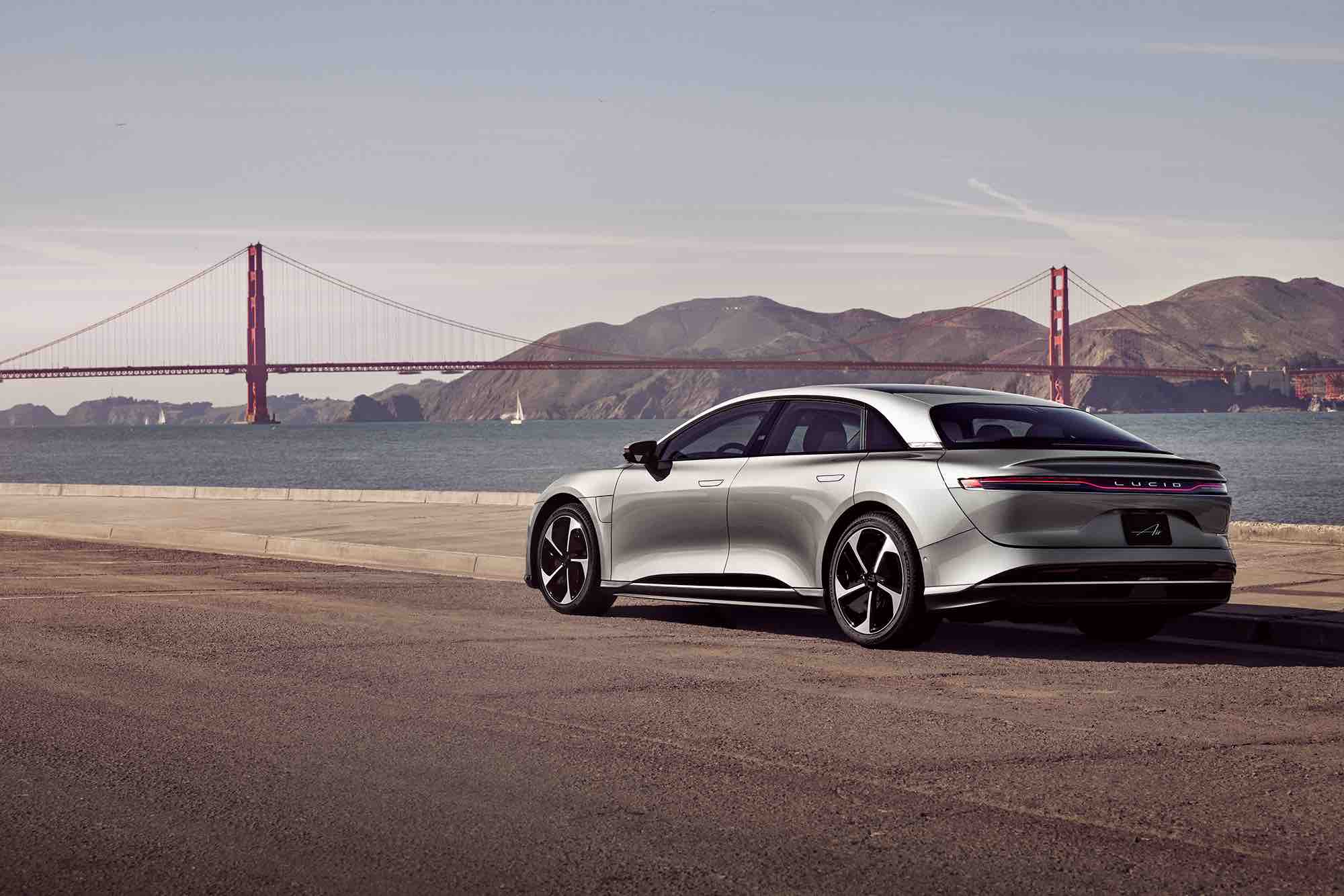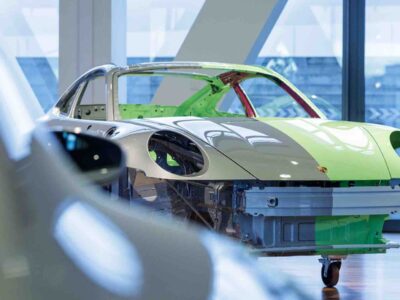As electric cars become more prevalent, several top-end manufacturers are creating these machines. They are not cheap, but their value tends to match their performance. This listicle will include all our luxury electric vehicle (EV) coverage, with names like BMW, Lucid, and Porsche. We’ve included hybrids and plug-in hybrids as we continue to bring you rundowns about these vehicles.
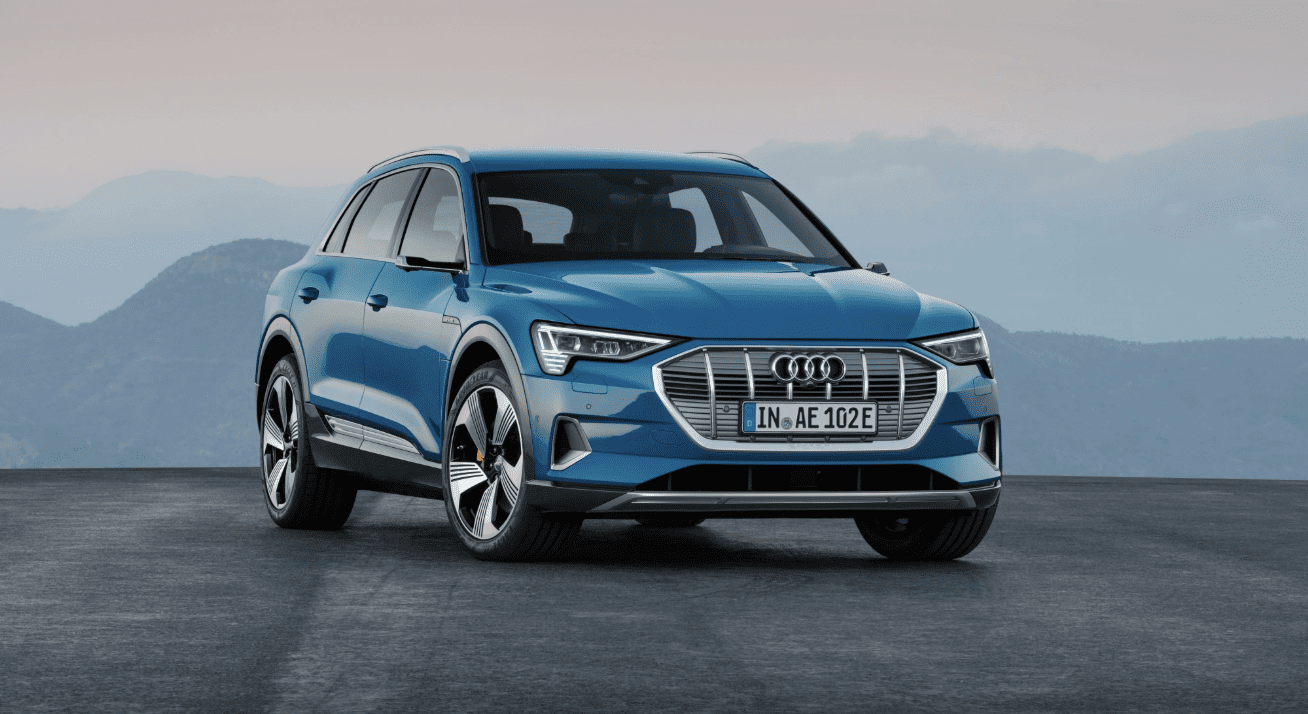
Photo Courtesy Audi
Audi e-tron: Audi’s e-tron is capable of competing with Tesla and Jaguar in the luxury e-SUV market. Using the build of a Q8 maximizes what worked with internal combustion models, with subtle tweaks to the body to make sure electrical performance is up to par.
It’s a very tech-savvy vehicle. Three different screens make up the infotainment system. There’s plenty of cargo room, up to 29 cubic feet of storage space. The range is 222 miles per charge, with 218 miles in the e-tron Sportback hatchback.
A regenerative braking system restores charge to the battery. Its fast-charging capabilities allow it to go from 10 to 80% in 30 minutes. The dual-motor all-wheel drive (AWD) engine offers 355 horsepower and reaches 402 horsepower in sport mode. An S model uses 469 power and goes 0-to-60 in 4.3 seconds, compared to the 5.1 seconds in the standard e-tron.
The MSRP starts at $67,095, with the Sportback costing $70,295. Audi hopes this car will spearhead its electrification initiative. The company plans to halt the development of internal combustion cars in 2026 and will be all-electric by 2030.
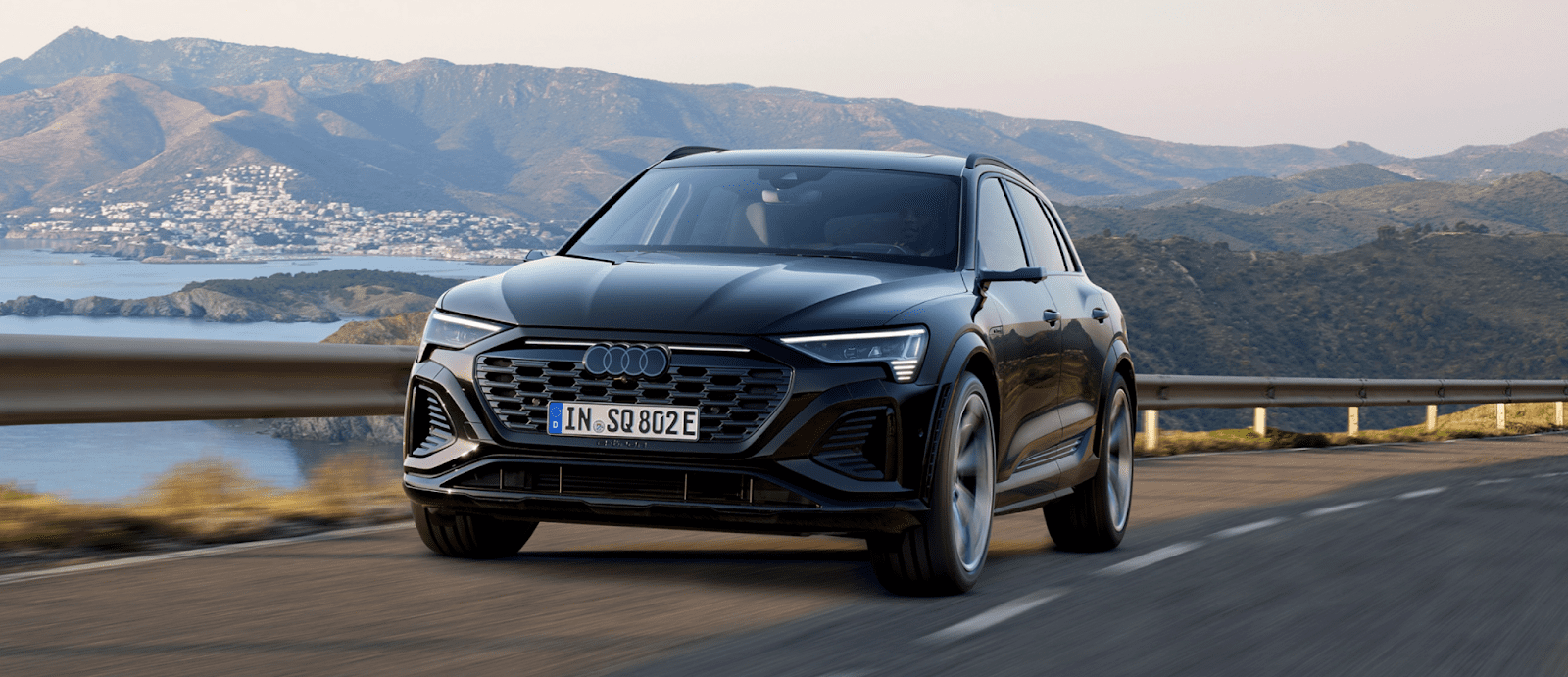
Photo Courtesy Audi
Audi SQ8 E-Tron: Audi’s SQ8 e-tron is challenging to categorize at first glance. Is it a “Sportback” small-size SUV, a crossover, or a full-size hatchback? However, under the hood is less confusing, with the German automaker saying the SQ8 will be a high-performance small SUV.
Around 496 horsepower makes up the new car’s motor. When it comes to charging, a 106-kW battery powers the drivetrain. Audi says fast charging can get the battery from 10% to 80% in just 31 minutes. “Car and Driver” also say it will have around 73 mpge in the city and 78 mpge on the highway. The myAudi app can track charge rates, notifying drivers about charge times and routes to find charging stations.
The inside comes standard with Audi’s modern infotainment system, a heads-up display, a digital dashboard with GPS capabilities, leather upholstery, a panoramic sunroof, automatic climate control, and heated seats. Drivers can control the car’s music and climate in the myAudi app.
The estimated pricing for the base model ranges from around $91,000 to $98,000. The 2023 model is available now, and the 2024 model arrived in April. It should be available for purchase in September 2023.
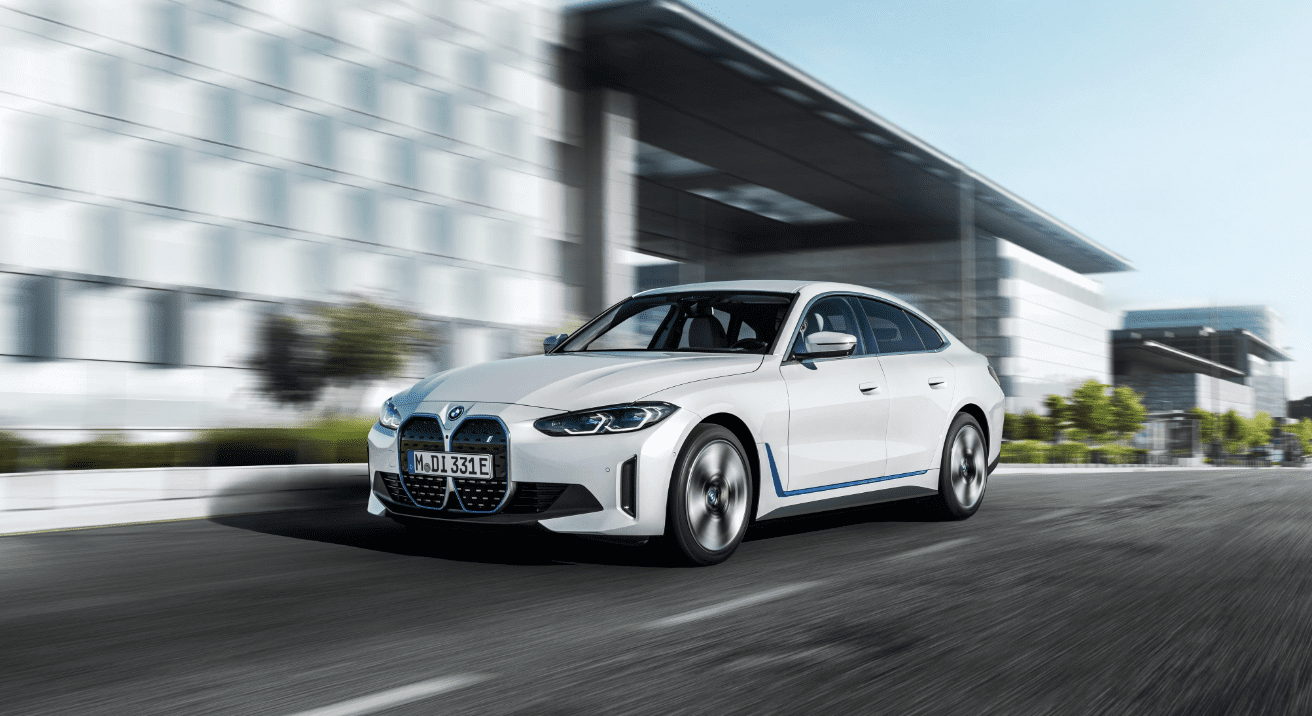
Photo Courtesy BMW Group
BMW i4 eDrive35: Electric cars are expensive commodities. Some of the niche brands can run well over the $100,000 mark. BMW has recognized that for widespread EV adoption, prices have to be reasonable. That’s where the BMW i4 eDrive 35 comes in.
This scaled-down sedan costs under $50,000 MSRP. It boasts a respectable 281 horsepower and 260 miles of range before the next charge. Inside, there’s a 12.3-inch touchscreen infotainment system.
The charge rate is decent, too, with only 32 minutes needed to go from 10% to 80% fully charged. It’s not the fastest electric sedan, only going from 0-to-60 in 5.8 seconds, slower than the M50 and eDrive40 counterparts. However, the goal of eDrive35 is to offer a luxury electric car that doesn’t break the bank and is reliable.
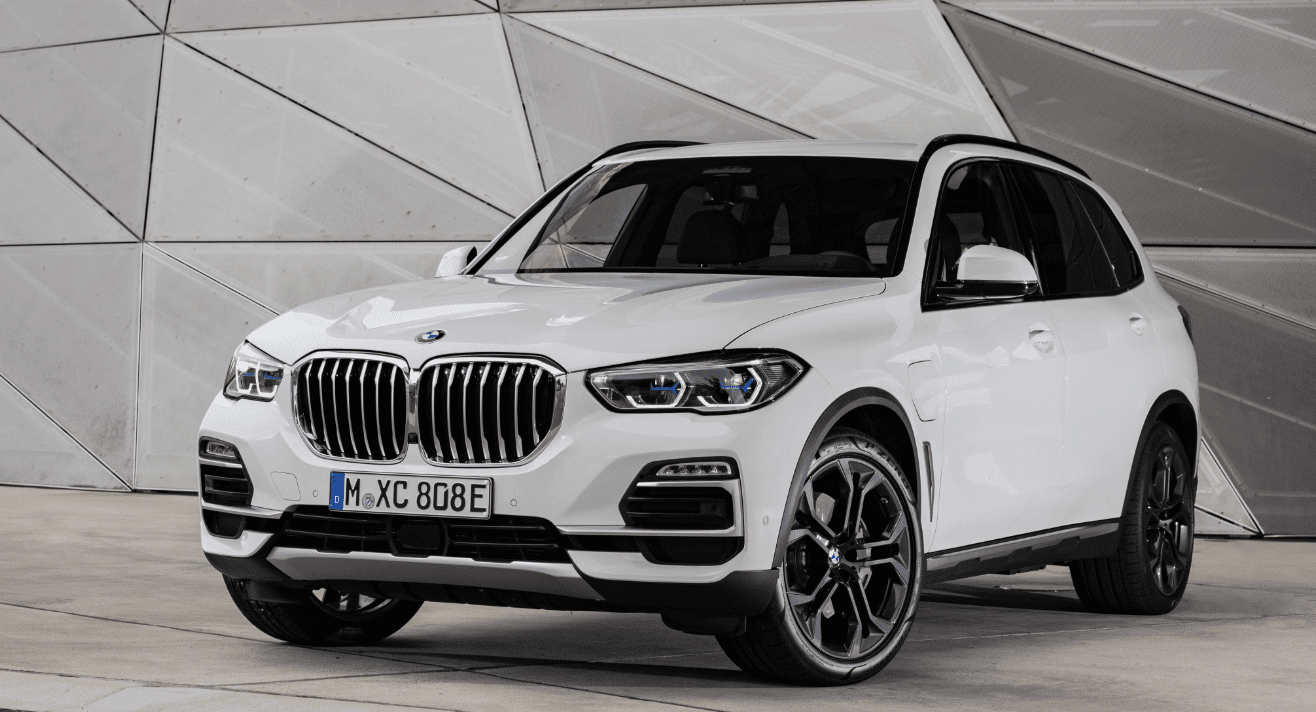
Photo Courtesy BMW
BMW X5: One of three plug-in hybrid options offered by the German automaker, the X5 is a rather powerful SUV. Under the hood, six cylinders in a combustion motor backed up by an electric one combine to create 389 horsepower. It can reach 0-to-60 in 5.3 seconds — pretty fast for an SUV. The e-MPG is commendable, getting 31 miles of electric range.
If electric power isn’t enough, gas power takes over. A regenerative braking system restores charge to the batteries without a charging station. The gas power doesn’t really kick in until the X5 reaches 84 mph. The downside is that the motor only has 111 horsepower, so getting that speed can take some time.
In the cabin, the digital dashboard lays out all the car’s performance information, like hybrid range, gas use, electric output, and charge status. This car starts at $63,700 MSRP but is eligible for the $7,500 clean vehicle tax break.
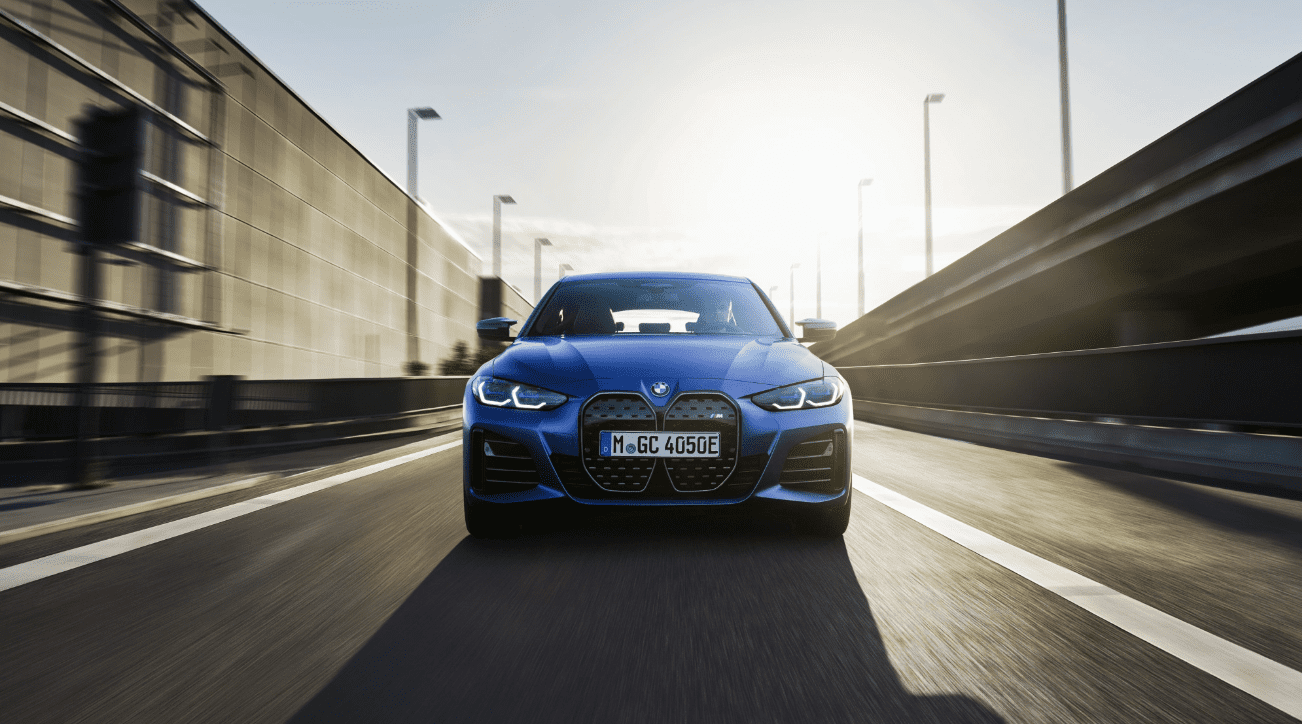
Photo Courtesy BMW
BMW i4: The predecessor to the i4 eDrive35, the original BMW i4 is the last electric model to use the CLAR modular platform. The car will use the Neue Klasse (New Class) modular system going forward. This change is expected in 2025, with all BMW electric powertrains running on it.
The current i4 has all-wheel drive and delivers 335 horsepower and 319 pounds per foot of torque. There’s also a faster model: the i4 M50, based on the racing-standard M50 coupe. Tracking testing found that it goes from 0-to-60 in 3.9 seconds. Publications like MotorTrend and Car and Driver found even faster driving times.
The i4 offers plenty of range, up to 300 miles before the next charge; the M50 model has 275 miles. Charging is faster than other EVs — 88 to 108 miles of range can be returned in just 10 minutes of charge.
The dashboard comes with one of the best infotainment systems in the world. It shows integral information like GPS, speed, road signs, and phone integration. The MSRP starts at $56,395.
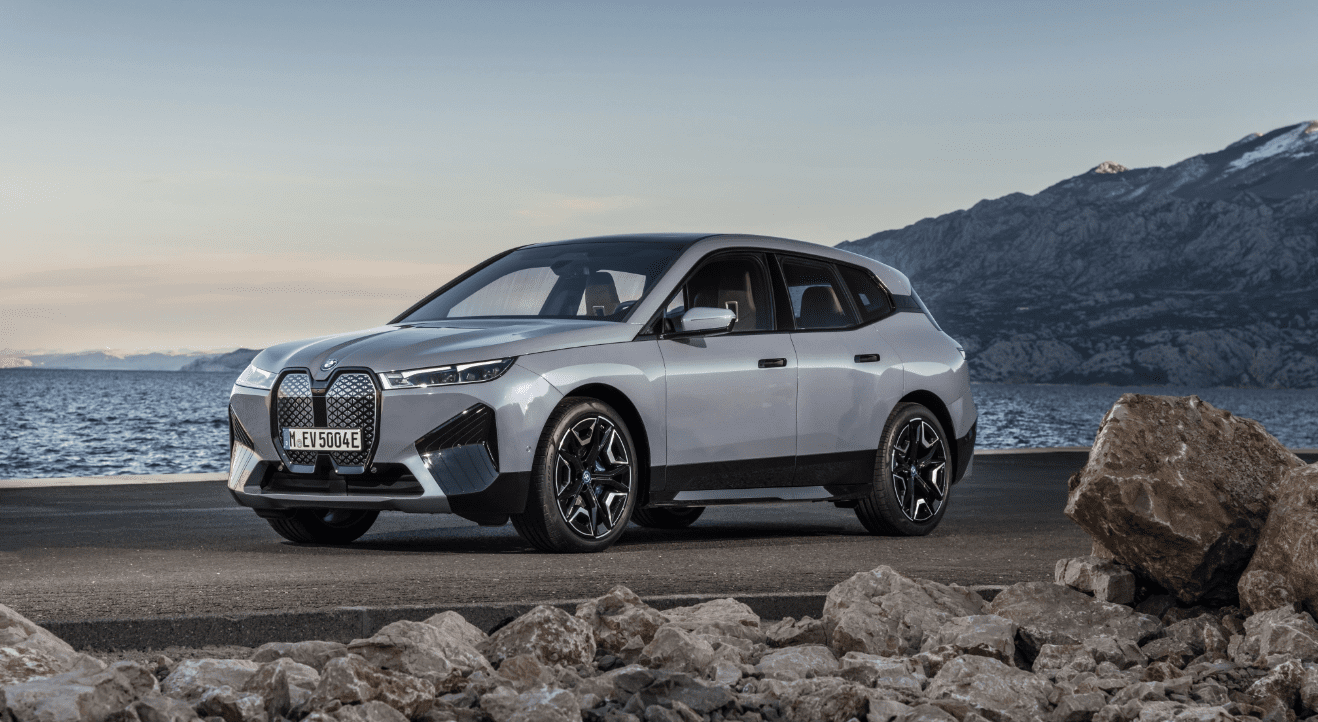
Photo Courtesy BMW
BMW iX: In 2021, BMW released the iX model, its first-ever electric hatchback the German auto giant produced. Complete with a dual-motor AWD powertrain, the car comes with 512 horsepower. It goes 0-to-60 in 4.4 seconds, fast for a crossover.
A performance version of this car, the iX M60, has even more horsepower with 600 and a sub-four-second 0-to-60 time. Battery range is about 315 miles, and Level 3 charging capabilities allow it to charge to 80% in just 35 minutes.
The interior is unique, with the steering wheel’s hexagonal shape for ergonomic support. The heads-up display includes map directions, battery charge, and mileage. The panoramic roof lets in plenty of natural light and can be shaded with a push of a button. There are multiple safety features like a rear-view camera, lane departure alerts, blind spot detection, etc. The iX starts at $84,195.

Photo Courtesy Bowlus
Bowlus Volterra EV RV: One of the coolest attachments for an EV, the Bowlus Volterra RV revolutionizes the camping experience. The camper trailer is modeled after the classic Airstream from the 1970s.
It comes equipped with a kitchen, shower, and full beds. The Volterra has solar panels built into the roof to charge it while parked at the campsite, which can power the interior’s features. The whole RV takes about 46 hours to charge to full battery. It can even be used as an emergency charger for your EV. It gives the car 60 miles of range back.
Inside, it’s like a mobile apartment. The kitchen has an induction stove, an electric stove that doesn’t overheat, a convertible king bed, a large bathroom, and a heated shower. The niftiest feature of the Volterra is the Starlink satellite internet. Travelers won’t have to worry about getting lost or contacting people in case of emergencies.
It’s a pretty expensive camper starting at $310,000. It’s still a very luxurious way to camp.
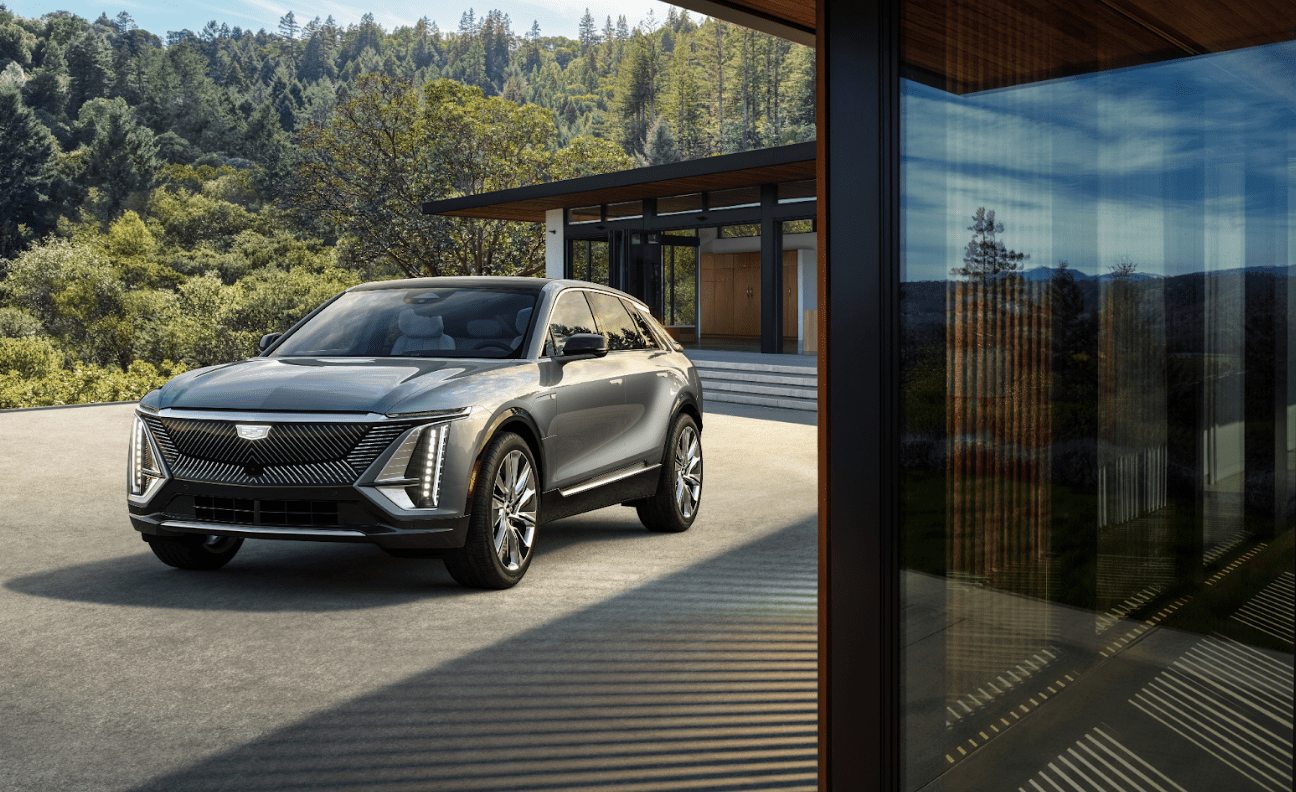
Photo Courtesy Cadillac
Cadillac Lyriq: In 2021, Rory Harvard, Cadillac Global VP, announced the car brand would be going fully electric by 2030, part of GM’s grander electrification plan. It coincided with the announcement of the Cadillac Lyriq, the luxury carmaker’s mid-size EV.
The rear-wheel drive (RWD) SUV comes standard with 340 hp and gets more than 300 miles of range on a single charge. The battery can get 76 miles of range returned with 10 minutes of fast charging. An AWD model is expected to follow soon. The Lyriq has a lot of nifty driver-assist features like automated emergency braking, lane departure warning, and adaptive cruise control.
The interior is extravagant with its digital control center. Rather than a touchscreen, a single knob controls everything. The interior is also soundproof, so you can comfortably ride and listen to music undisturbed.
The exterior is a modern take on the famous Cadillac bodywork. The charging port is strategically placed, so it looks almost invisible. The lights and grille look like the Cadillac style we know and love, with a light-up logo front and center.
Along with the Celestiq, the Lyriq can usher in a brand-new era for the carmaker. The Lyriq will cost $59,990 and will be available in 2023.
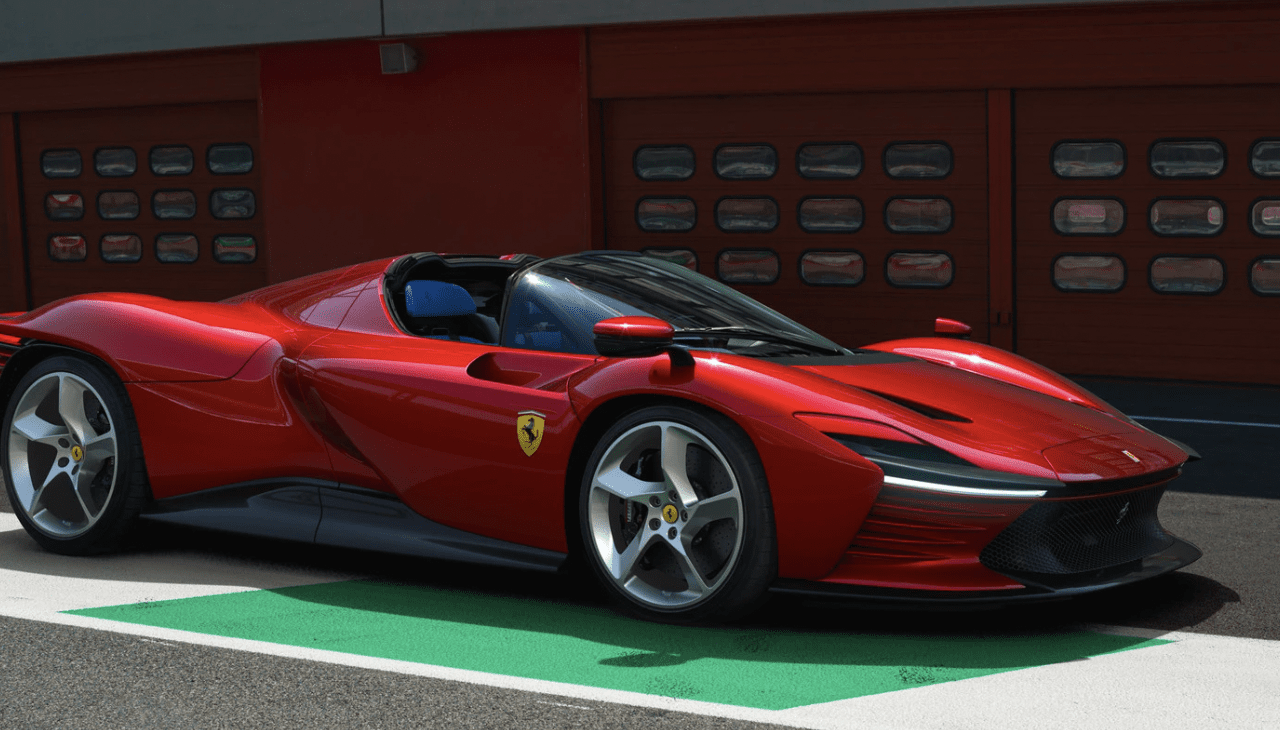
Photo Courtesy Ferrari
Ferrari SF90 Stradale: As Ferrari prepares for broader electrification, the company has put the plug-in hybrid SF90 Stradale on display as the start of better things to come. CEO Benedetto Vigna says he plans to roll out a fully electric car by 2025 and open eco-friendly factories.
For now, the Stradale will be the only car with some electric power in the engine. It’s a crazy fast hybrid car with 986 horsepower under the hood. It goes 0-to-60 in 2.0 seconds and gets 51 mpge along with 18 mpg from gas power alone.
Once Ferrari’s E-Building begins producing EV components, the electrification at Ferrari will increase tremendously. The company predicts 40% of its production will be electric-only cars. In addition, 80% of Ferrari’s lineup will be electrified by 2030.
Thanks to Vigna’s background in the semiconductor industry, he brings fresh knowledge of some of the most important aspects of electric cars. That will only spur more EV production.

Photo Courtesy GMC
GMC Hummer EV: Since the Hummer brand was scrapped in 2010, we thought we’d never see the bruising behemoth vehicle ever again. That was until 2020, when General Motors Company (GMC) announced the revival of the truck, this time with electric power.
It’s one of the craziest electric trucks ever produced. The front grille has ultra-bright LED lights with a moon-rover body. The hefty truck weighs in at 9,000 pounds yet is pacey and agile.
It can go 0-to-60 in 3 seconds, thanks to three electric motors under the hood. That gives the Hummer close to 1,000 hp and 350 miles of range. It can get 100 miles of range back with ten minutes of fast charging. GM’s Ultium batteries are powering this beast of a truck. That’s better than the Tesla Model X. The truckbed has a 1,300-pound payload and can tow anything up to 7,500 pounds.
The Hummer is equipped to handle the toughest terrain. Four driving modes can adjust suspension, steering feel, and drive height. The nifty “Crab Walk” feature allows for driving diagonally if you need or want to.
The interior is super spacious, with plenty of legroom in the back seats. A digital dashboard and medial control center make up the front. It’s a bit pricey, starting at $112,395 for the Edition 1 model, but smaller models are comping that will be cheaper. Expect those smaller models to be released in 2024.
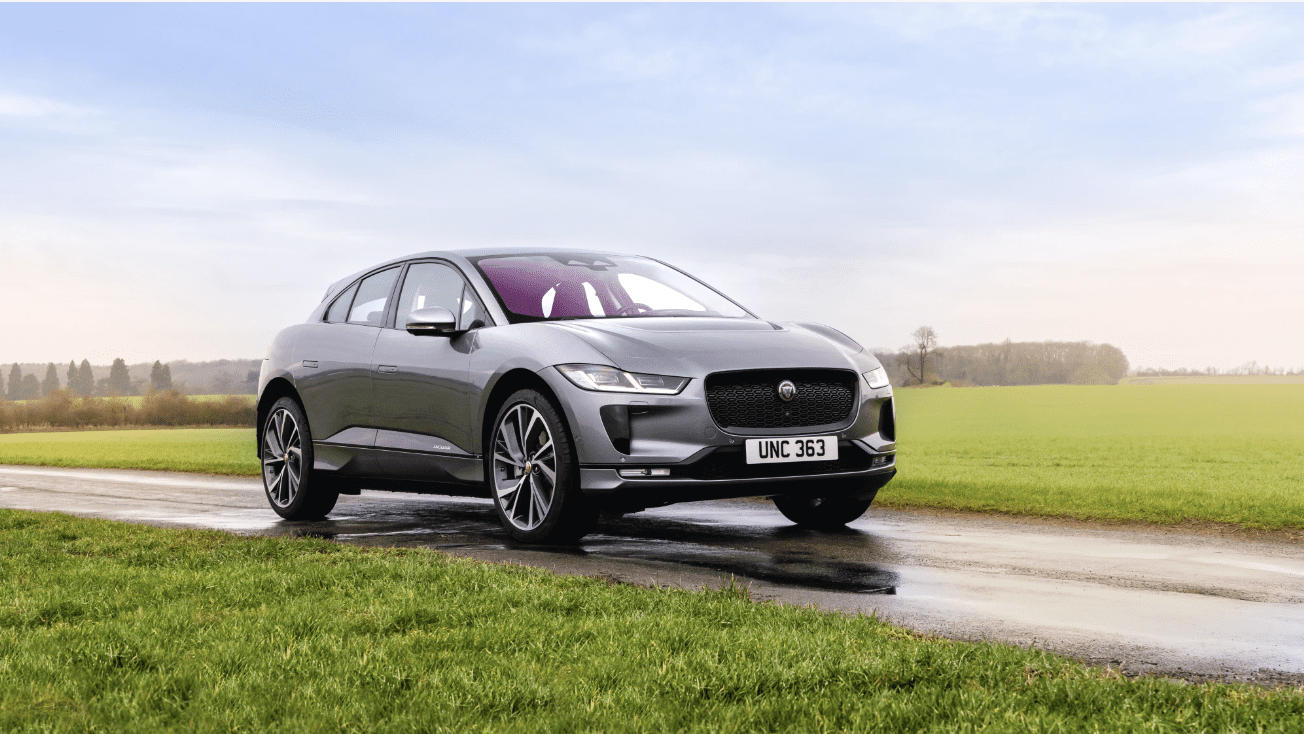
Photo Courtesy Jaguar
Jaguar I-Pace: The I-Pace is the first EV manufactured by Jaguar Land Rover. The electric crossover, launched in 2019, brought a fresh, exciting car to Jaguar’s lineup.
Unlike other crossovers, the I-Pace is less of an awkward fusion between SUV and sedan. It’s more like a totally bespoke vehicle. The door handles are flush with the doors, and its curved chassis increases aerodynamic performance.
Under the hood, the engine is no joke. It exerts 394 horsepower with 512 pounds-feet of torque. I-Pace’s acceleration goes 0-to-60 in 4.5 seconds, and it can drive for 253 miles on a single charge, competing with EVs from Audi and Tesla. The battery can reach 80% charge in 40 minutes. The regenerative braking system returns charge to the battery.
The interior can seat five passengers and comes standard with a dual-screen control center. The safety systems are impeccable, too. Driver assistance features like emergency braking, adaptive cruise control, and blind-spot detection are just a few examples.
The current price sits at $69,200. The I-Pace is just the beginning of Jaguar’s electric fleet. The company plans to launch an expanded EV lineup in 2025.

Photo Courtesy Jetson Aero
Jetson One eVTOL: Swedish VTOL startup Jetson Aero has been working on a single-seater flying car. This vehicle is a drone-esque aircraft that can fly up to 60 mph. It also has an eight-rotor system that gives users better control of a small plane or helicopter.
The Jetson One is still a few years away from commercial sales. The battery range still needs to be sorted out. It only has a 20-minute charge life at the time of writing. Jetson also has to deal with regulators, as the One isn’t legal to fly in densely populated areas.
The company isn’t surprised, though, because flying cars are very much an untested technology. They’re designed more for fun than commuting or travel. Jetson ensured customers at least had or could obtain a legal pilot’s license before they considered making any sales.
In 2022, the first batch of One eVTOL orders came in, and deliveries for 2023 are expected soon.
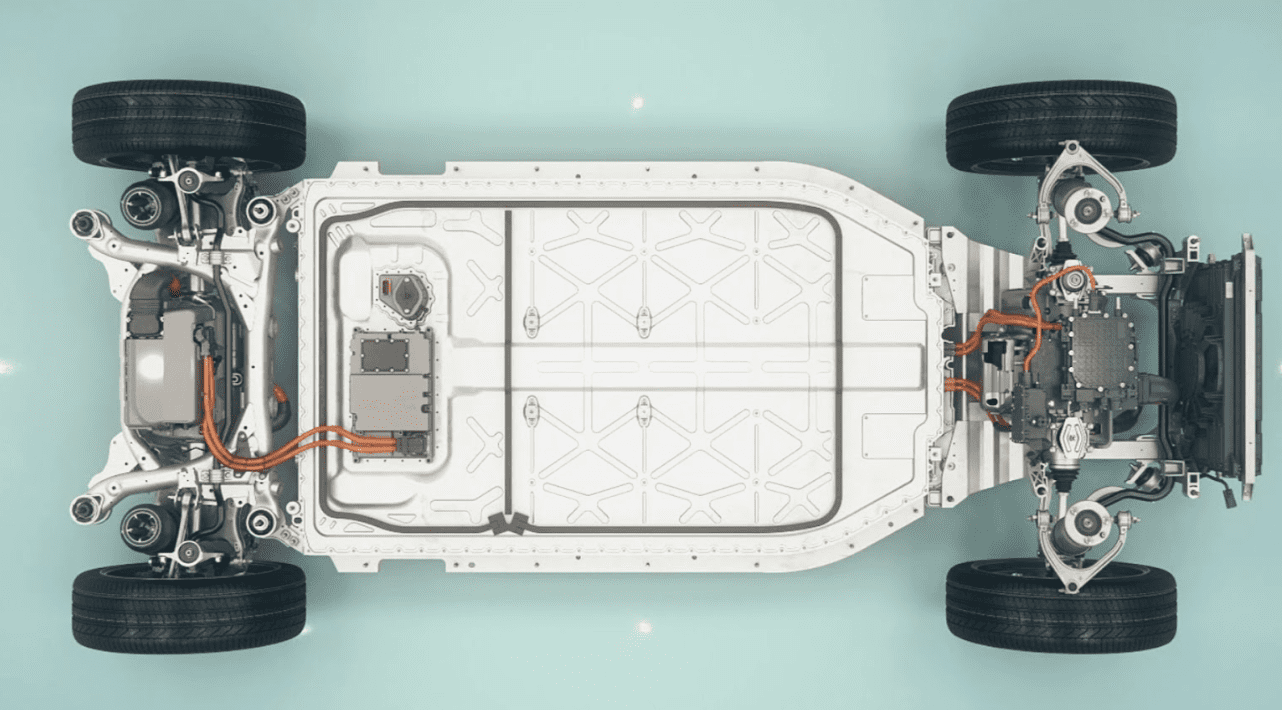
Photo Courtesy Jaguar Land Rover
JLR EVs Get Performance, Range Boost: Jaguar Land Rover (JLR) inked a nifty deal with North Carolina-based semiconductor producer Wolfspeed. It will see racing tech used in Jaguar’s Formula E racing cars implemented in civilian EVs.
Wolfspeed has been a partner with JLR since 2017, helping Team Jaguar obtain or, at the very least, compete for Formula E glory on a few occasions. The deal was signed on Oct. 31, 2022. The Silicon Carbide technology will make JLR’s EVs more efficient and increase the range.
The first vehicle slated to use this technology will be the 2024 electric Range Rover and the new line of Jaguar EVs coming in 2025. Wolfspeed is producing these powertrains at a plant in upstate New York, the world’s largest 200-mm Silicon Carbide fabrication factory.
This effort is part of JLR’s greater electrification strategy, called Reimagine. The goal is to have electric-only sales, carbon-neutral supply chains, and eco-friendly operations by 2039.
Despite a few canceled projects like the XJ sedan, the future is bright for JLR’s EV lineup. There are even plans for hydrogen-powered Land Rover SUVs.
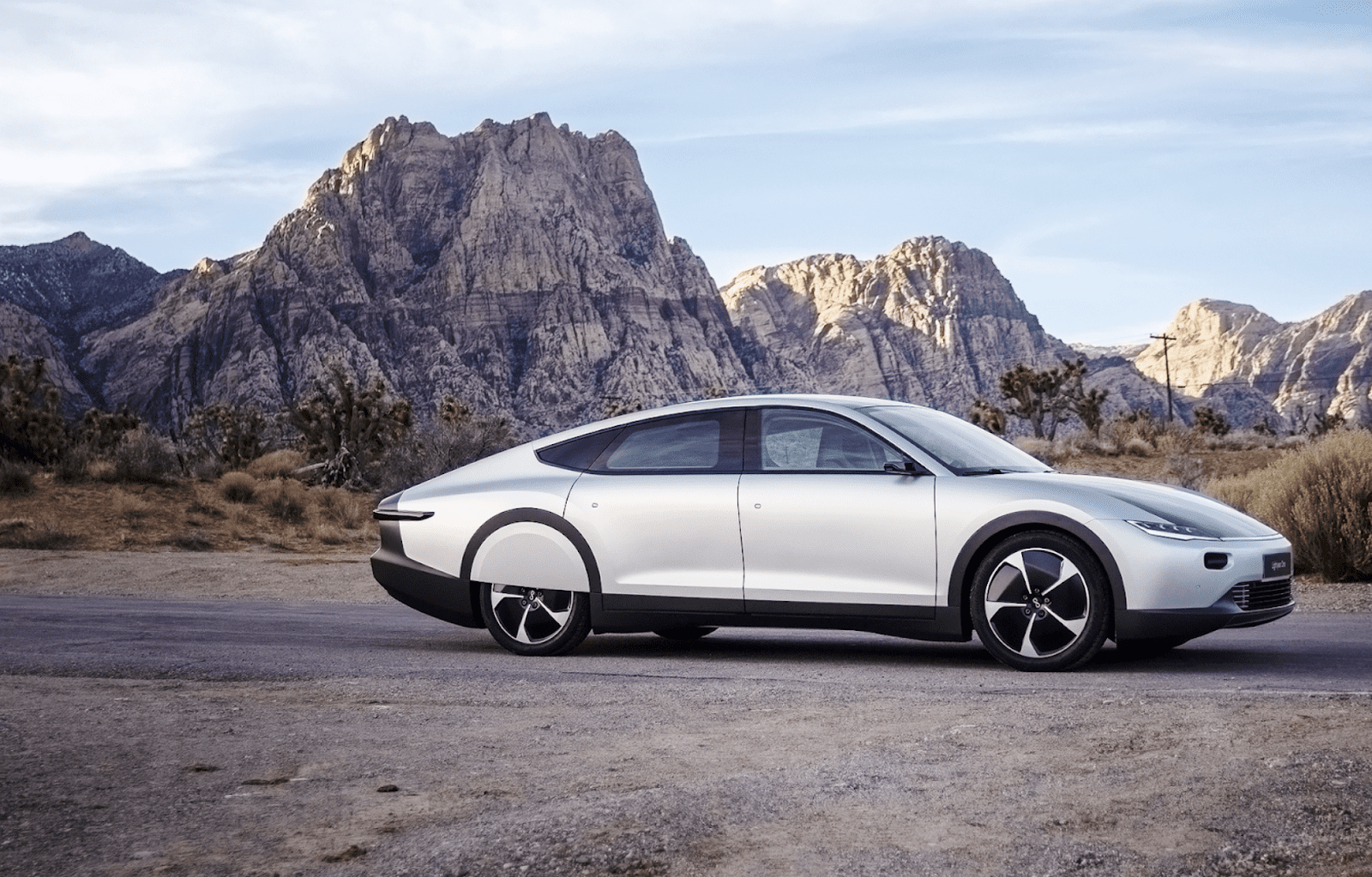
Photo Courtesy Lightyear
Lightyear: Lightyear is building EVs with solar panels integrated into the car’s frame. Both automakers are making concerted efforts to make solar-powered EVs a reality.
Lightyear was founded in 2016 and launched the Lightyear One shortly after. The company has set a goal of delivering a car that will need to be cord-charged only once or twice a year. It can travel 440 miles on a single charge, a better range than most Teslas. Lightyear’s car charges 7.5 miles an hour, meaning you can leave it parked, and the sun will power it.
The price starts at $175,000. More Lightyear vehicles are coming in 2024 or 2025.
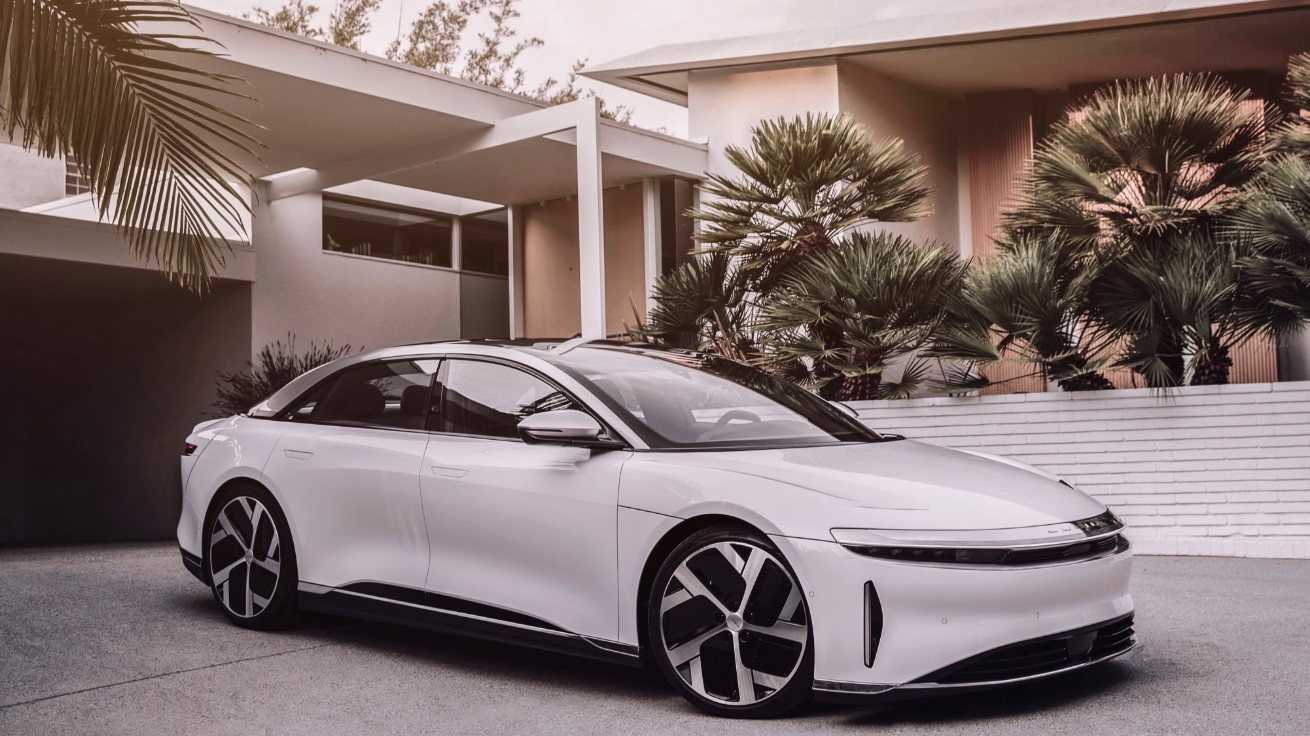
Photo Courtesy Lucid
Lucid Air Dream: In November 2021, the Lucid Air Dream won MotorTrend’s Car of the Year 2022, and this was the company’s first production release. Run by former Tesla chief engineer Peter Rawlinson, Lucid has been giving Porsche and Tesla a run for the money.
The Air Dream is an ultra-advanced electric car, complete with 1,111 hp in the engine and 0-to-60 in 2.5 seconds. It can hit a top speed of 168 mph — not bad for a civilian EV. Using the same batteries found in Formula E racecars, the Air Dream gets 520 miles of range before the next charge.
The sporty exterior is designed to look flashy without going over the top. Its curved design makes it one of the most aerodynamic EVs on the market. Inside, the interior is elegant and spacious. The central control system has a touchscreen infotainment system and a digital dashboard. The interior is made from sustainable materials like Napa or PurLuxe vegan leather. The headliners are made from textiles like alpaca fur, recycled yarn, and Eucalyptus wood. There’s a front and back trunk for ample storage space.
The Air Dream requires yearly maintenance, but Lucid’s over-the-air operating system can update the car and run diagnostics through the cloud. The car is expensive, starting at $117,000.
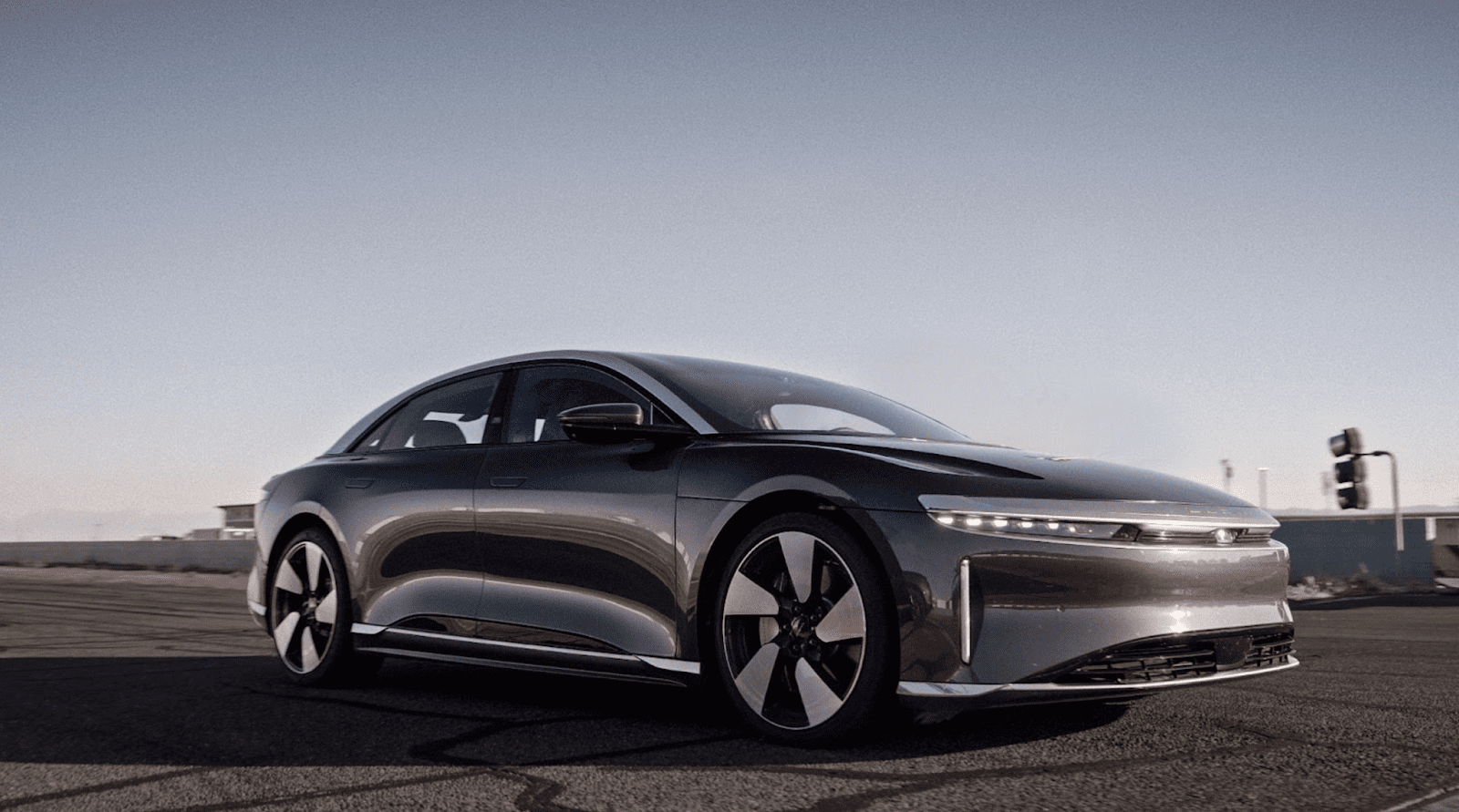
Photo Courtesy Lucid Motors
Lucid Air Grand Touring: The Lucid Air Grand Touring could give Tesla a run for the money. Testing by “Car and Driver” found that it was faster and more efficient than the Tesla Model S. The Air can reach a battery range of 410 miles, a new record for an EV. It’s 90 miles more than the Tesla Model S’s battery.
The aerodynamic design of the Air allows it to cruise longer with less drag to fight. The luxury sedan can go 0-to-60 in 3 seconds, just under the Model S’s time of 2.7 seconds. Testing also found the Air Grand Touring and Air Touring models had better-charging rates than Tesla. The car can go from 10% to 90% in 46 minutes, returning 297 kilowatts at peak charge, higher than Tesla’s 250 kWh.
Lucid owners can get up to three years of complimentary charging with a purchase of an Air. The car has bidirectional chargers for home charging, and if home power is lost, the Air can power it with its battery.
The interior is stylish, with wireless phone chargers built into the cup holders. It has a very advanced infotainment system with features like GPS, Bluetooth media and phone integration, and music streaming apps. The car is quite pricey at $155,600 for the Grand Touring model and $140,500 for the base Touring.
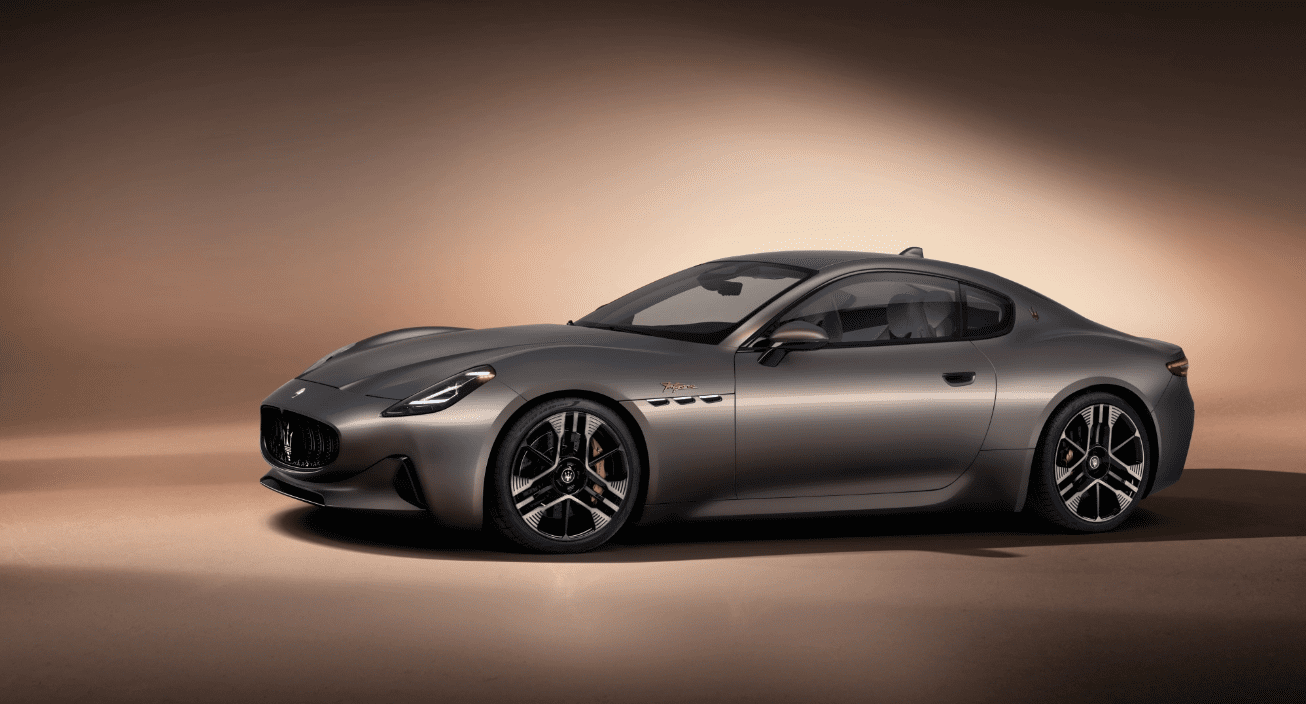
Photo Courtesy Maserati
Maserati GranTurismo: Being under the Stellantis umbrella, Maserati’s EV development is also a little behind other top European brands. However, the electric GranTurismo Folgore model is a good starting point. The Italian luxury carmaker plans to offer fully electric cars by 2025.
The electric GranTurismo will not be short on power and performance. The company plans to use powertrain technology from its Formula E racing team. The engine will generate 760 horsepower at the wheels, the most powerful Maserati coupe ever built. An 800-volt battery will be attached to the backbone-style chassis in a “T-bone” shape. The body is made from aluminum and magnesium to increase aerodynamic performance.
The electric GT will include an Atlantis High electronic system that improves GPS function. It can send up to 2,000 messages a second to company headquarters about performance issues. Maserati can send over-the-air updates and include a level-5 cybersecurity system in the hardware.
The sound system in the GT is the most impressive, with 19 custom craft speakers installed, thanks to Sonus Faber. Maserati prices the electric GranTurismo at $195,000.
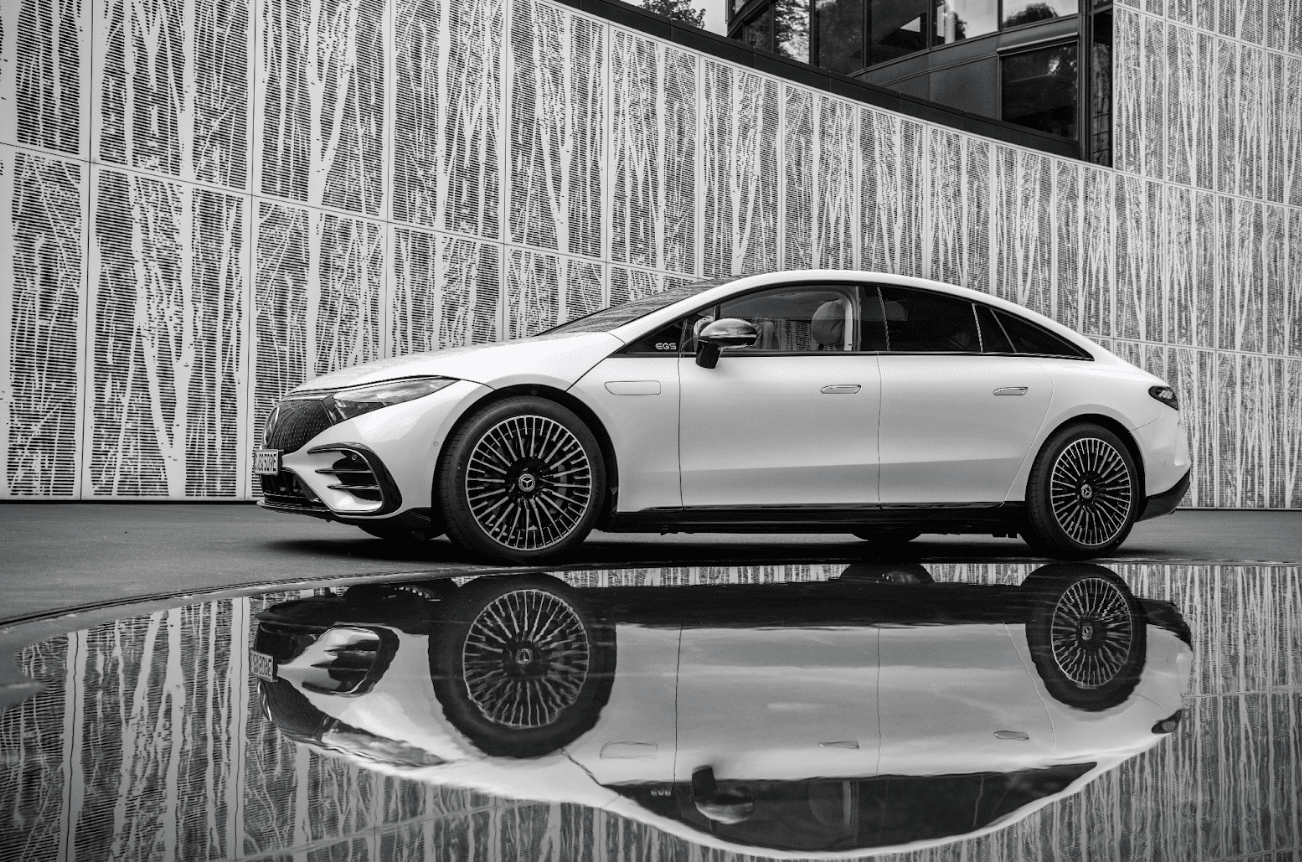
Photo Courtesy Mercedes-Benz
Mercedes EQS: Inspired by the S-Class, the Mercedes EQS is the first EV from the German company. It is one of the most technologically-savvy cars on the market. The door handles are the pop-out kind found on brands like Tesla. Its rounded design has one of the best coefficients with 0.2 flat drag.
The EQS has a dual-motor and all-wheel-drive that produces 516 horsepower. Battery range sits at 340 miles before another charging, and customers can pay for a single-motor, rear-wheel-drive option with 350 miles of range. For a car built for luxury and comfort, it’s pretty fast, boasting 0-to-60 in 4.1 seconds.
Inside the cabin, the Hyperscreen display uses artificial intelligence for a simpler user interface. The safety features include driver assistance systems like self-parking, emergency braking, adaptive cruise control, and active steering assistance. The base EQS costs $106,360, but the AWD version costs closer to $120,000.
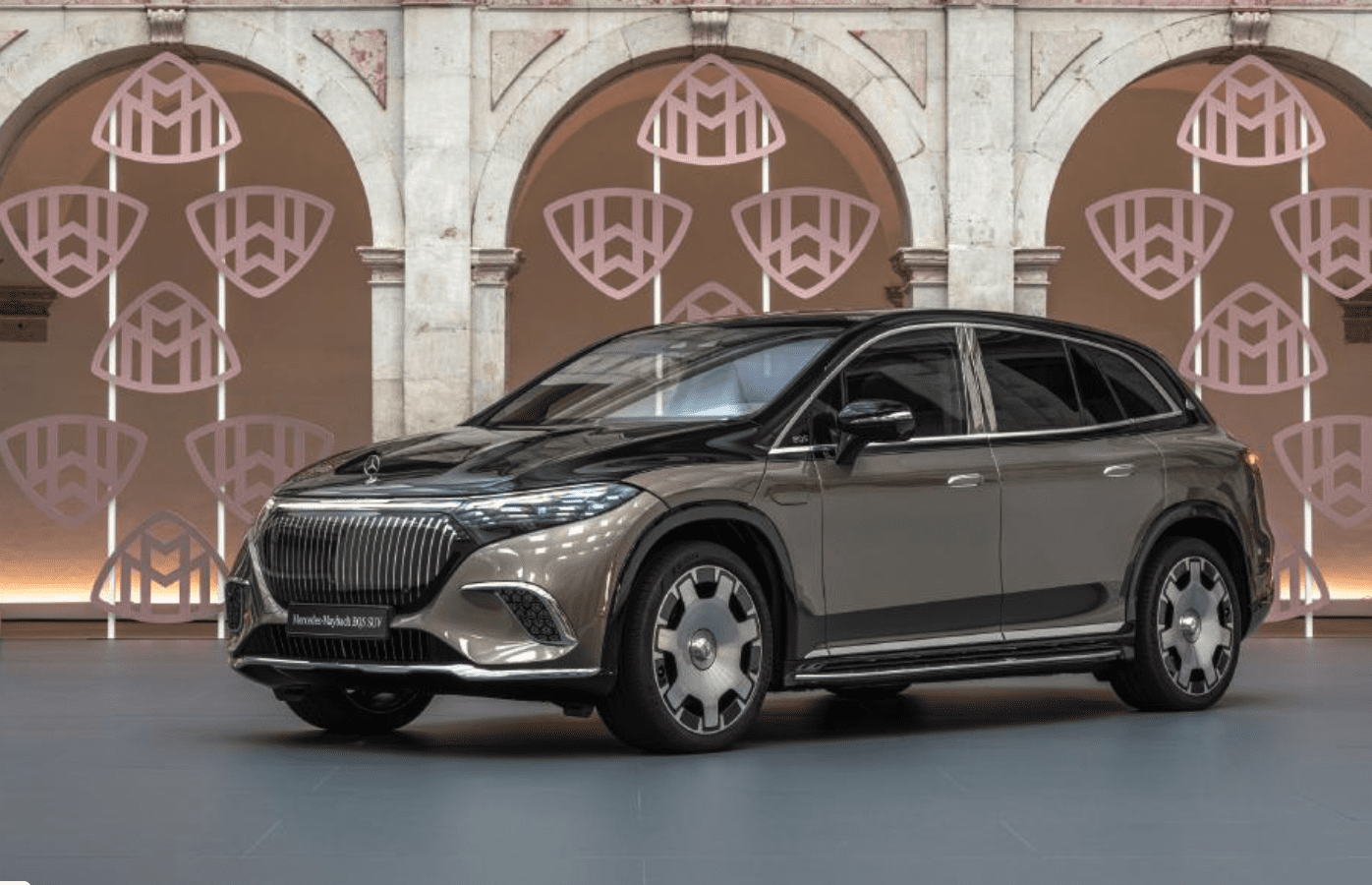
Photo Courtesy Mercedes-Benz
Maybach EQS SUV: Mercedes-Benz unveiled the ultra-luxury EV in April 2023 in Shanghai, China. The new Maybach boasts impressive range, performance, and comfort.
Mercedes-Maybach says the EQS can travel up to 373 miles on a single charge, or 600 kilometers, which is a provisional figure. Under the hood, there is a 649 horsepower engine, resulting in an acceleration rate of 0-to-60 in 4.1 seconds.
The top speed was recorded at 130 mph, and AWD comes standard for each model. The battery powers up quickly, recharging up to 200 kW. A direct current can take the battery from 10 to 80% full in 31 minutes.
The interior is an ode to luxury. Features are available like customizing the back seat center console to include two folding tables, a cooling compartment, and silver-plated champagne goblets. Early estimates suggest it will cost around $200,000 for the base model; however, limited editions may cost as much as $300,000.

Photo Courtesy Candela Speed Boat
Polestar & Candela Speed Boat: Polestar and electric boat startup Candela struck a deal to share and supply engine and charging equipment with each other. Candela plans to release a line of vessels for recreational use. These boats have hydrofoils that glide across the water.
This tech doesn’t produce any wake and is quieter than traditional boats. The hydrofoils use 25% less energy since they don’t have to fight the current. When you factor in fossil fuel reduction, these speedboats use 80% less energy. Polestar’s batteries gave Candela the impetus to successfully launch the P-8 and C-8 powerboats.
The company tested the vessels in places like Venice, where boating wakes have eroded parts of the canals. There are plans to use the C-8 as an electric water taxi.
In spring 2022, Candela recorded more than 100 orders for their boats. They’ve outsold some traditional boat brands. Candela also received funding to build a 30-passenger ferry in Stockholm, which is set to be operational sometime in 2023. According to “Inside EVs,” the $450,000 boats are due to be start being delivered in June 2024.
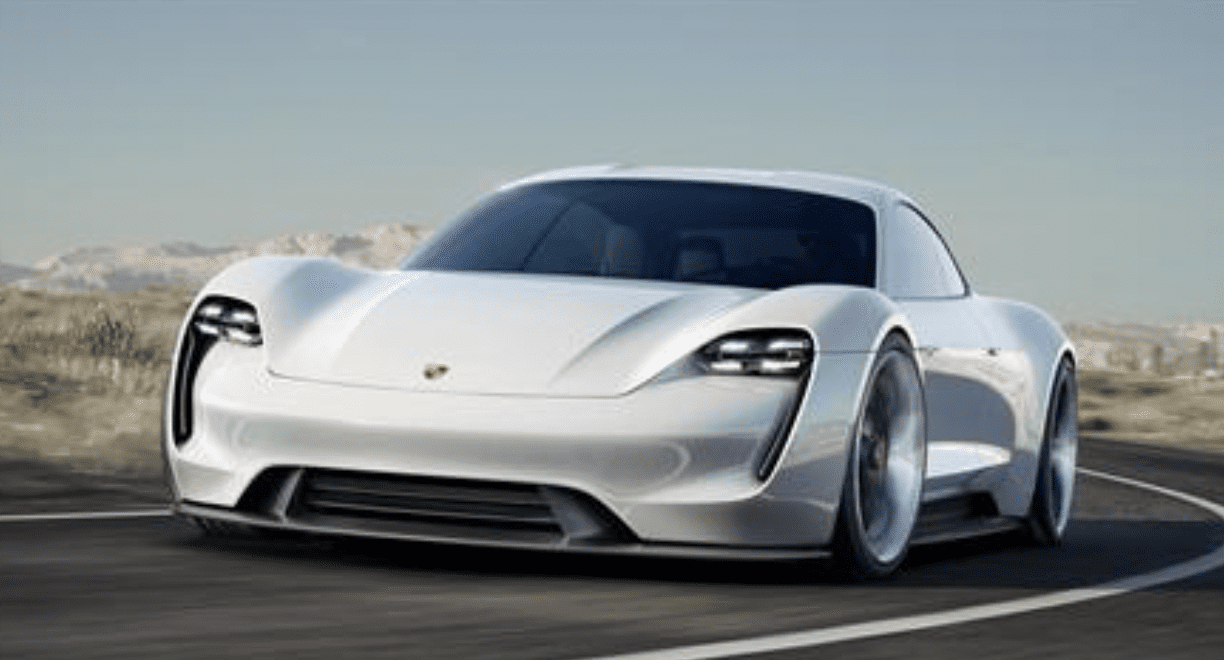
Photo Courtesy Porsche
Porsche Mission E: Following the success of the Taycan and Macan EV models, Porsche is planning a faster, more dynamic electric sportscar. With the body of its flagship 911 muscle car, the Porsche Mission E aims to be one of the best-performing zero-emission sports cars.
The company says the Mission E will have 250 miles of cruising range, with a maximum of 300 miles at full battery. Charging will only take 15 minutes. It’s believed to whip down roads at a max speed of 180 mph.
Porsche’s Mission E puts it ahead of competitors like Ferrari and Lamborghini, who are just beginning their electrification. This new Roadster will give Porsche an edge: a predicted 80% increase in battery-EV sales by 2030. In the short term, 50% of new car sales will be mixed-battery EVs.
If everything goes to plan, Porsche may decide to build a fully electric 911 car, even though some executives pushed back on that concept.

Photo Courtesy Porsche
Porsche Taycan: Porsche designed the Taycan to compete with the likes of Tesla and Lucid for one of the fastest electric cars available. Track tests revealed the Taycan had a 0.22 drag coefficient, on par with Lucid and Tesla’s 0.2. It shares similarities to its Panamera cousin, the most significant difference being the electric motor. The Taycan is shorter and more aerodynamic, though.
The turbo version can go 0-to-60 in 2.6 seconds, and the base model time is around five seconds. It has a two-speed transmission that aids with acceleration time. All Taycan models come with an AWD and dual-engine system.
As for horsepower, there is 402 hp under the hood, which increases in the higher-performance versions. The Turbo has close to 600 hp — it’s fast and handles like a Porsche.
The challenges lie with the range — the Taycan gets 227 miles of range. However, the flip side is the charging rate. With a direct-current fast charger, you can go from 5% to 80% in just 23 minutes.
Inside, the interior mixes minimalism with modernity. The infotainment system is top-notch, with two central touchscreens. The starting price begins at $84,000, which jumps to $105,000 for higher-performance models.
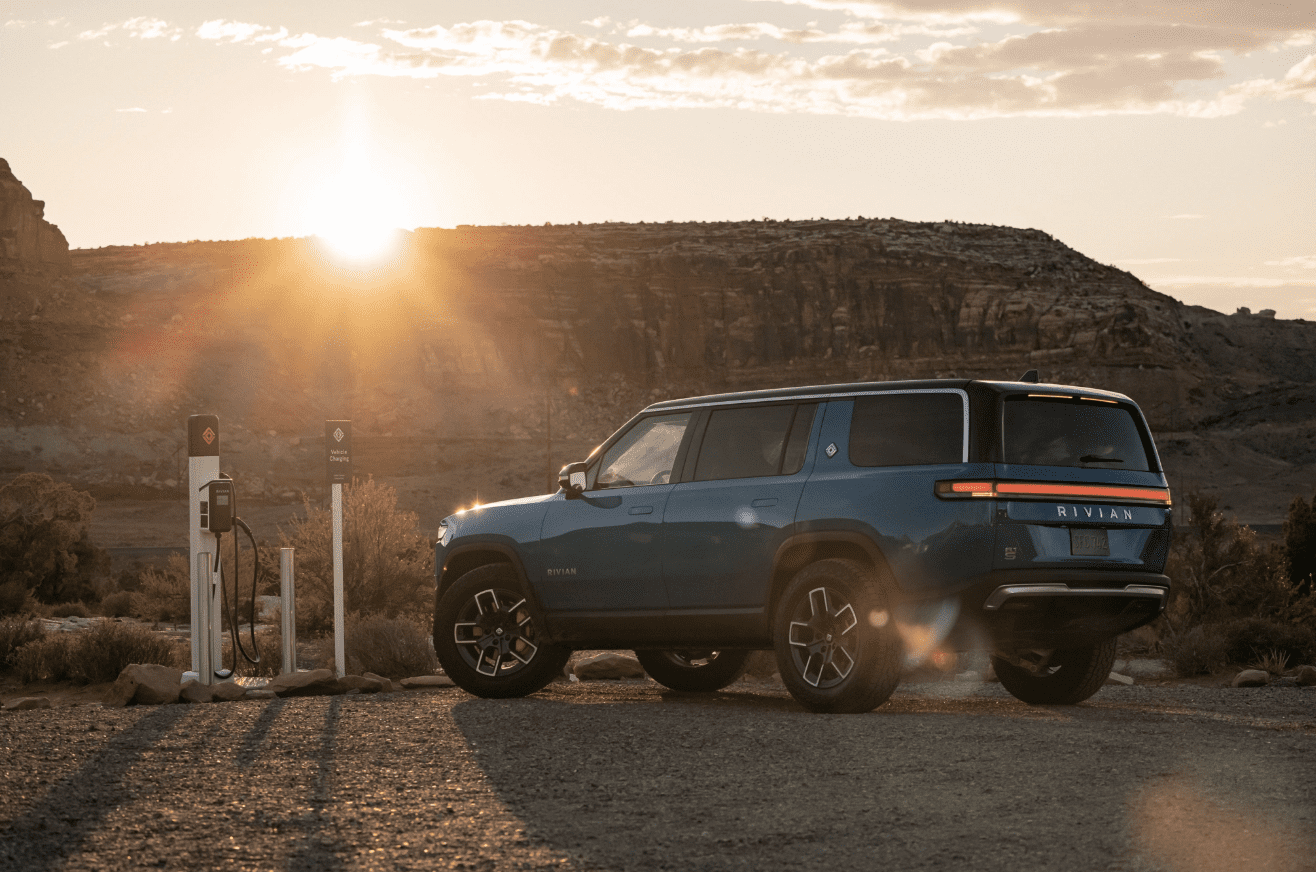
Photo Courtesy Rivian
Rivian R1S: The SUV counterpart to the R1T, the R1S is just as reliable and sleek as its truck predecessor. Rivian claimed both of its vehicles shared 91% of the same components. The big difference is the truck bed on the R1T.
The R1S has a similar performance record, with a 0-to-60 time of 3 seconds thanks to 800 hp in the drivetrain and a quad-motor system to send power to each wheel. There’s also a “torque vectoring” system delivering a precise amount of torque to each wheel. When off-roading, the R1S can handle depths as high as three feet, tow 7,700 pounds, and crawl rock at 100% grade.
In terms of range and charging, the R1S has a 128.9kWh battery giving a respectable 316-mile range. Rivian is developing a network of charging stations, much like Tesla. Depending on location and battery tech, it will offer 200 or 300kWh chargers.
The interior is designed with vegan leather, a light-colored wood frame, and infotainment displays. The trunk has 104 cubic feet of space plus additional storage under seats and in the front trunk. The R1S will be produced in a new Georgia factory, costing around $72,500 MSRP.
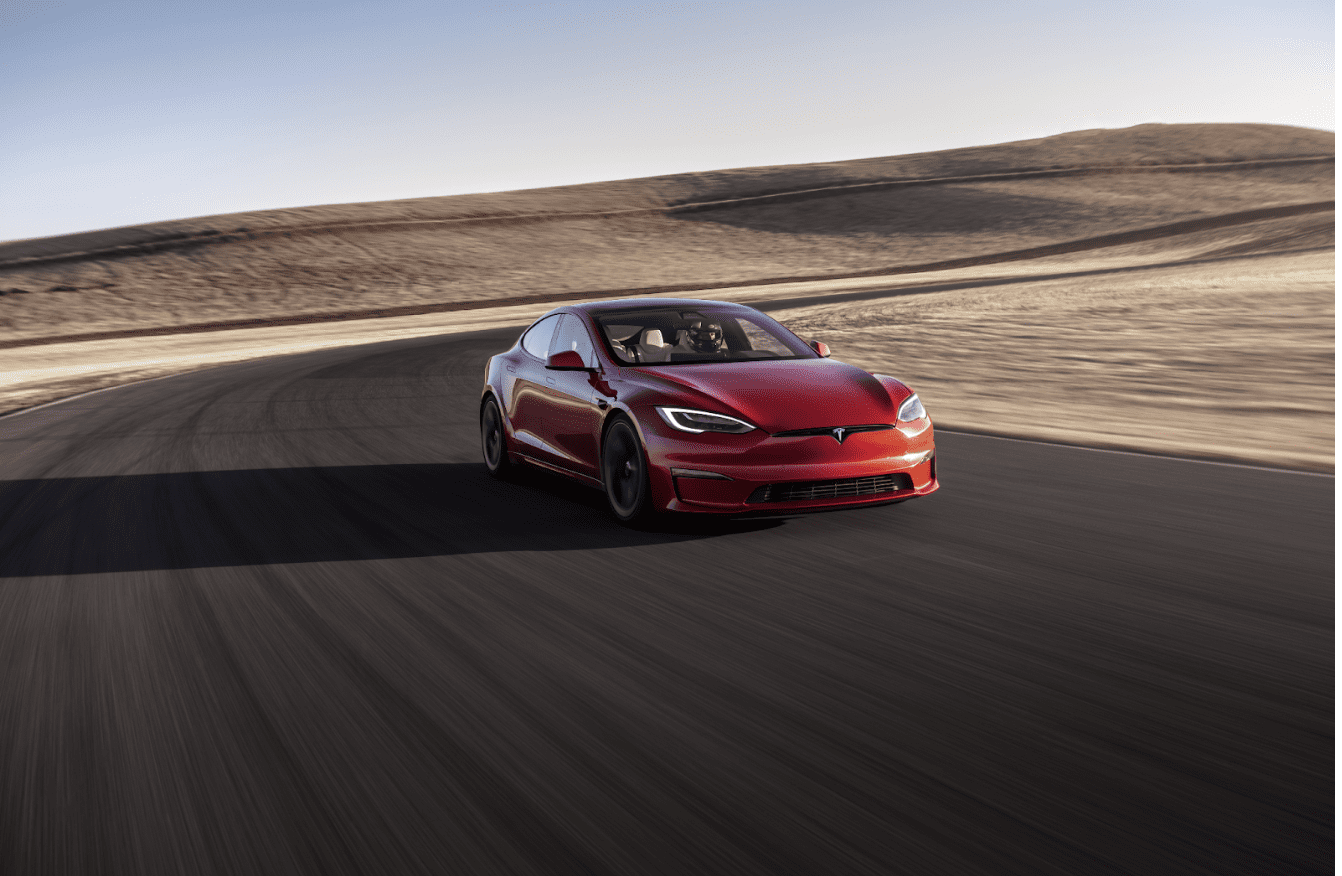
Photo Courtesy Tesla
Tesla Model S: The Model S is setting a new standard for high-performance electric sedans. The car has a similar design to the Model 3 but with a much longer driving range and more power in the engine.
In 2022, Tesla released the Model S Plaid, its most unique car to date. The range is estimated to reach 412 miles before the next charge, one of the best ranges of any EV. When charging, 200 miles can be restored in 15 minutes. In terms of power, the Long Range Model S has a dual-engine motor that supplies 670 hp to the car. It can go 0-to-60 in 3 seconds, and max speeds have hit 155 mph during testing.
The Plaid version’s 0-to-60 time is even more impressive at 2.1 seconds, keeping pace with the Bugatti Chiron Sport, a car that’s 10 times as expensive and even harder to purchase. The Plaid has 1,020 hp and can go up to 200 mph while maintaining the 400 miles of battery range.
The interior has a massive panoramic sunroof, along with all the bells and whistles found in other Teslas. The steering wheel is boxier, almost hexagonal. A large infotainment controls everything inside. For cargo space, there’s a 26-cubic-foot rear space and front trunk.
Safety features include automatic emergency braking and a low rollover rate. The car was designed to withstand the worst accidents. There are some hands-free driving capabilities like lane merge and Full Self-Driving. It’s a pricey car starting at $96,440 for the base model and $130,000 for the Plaid.

